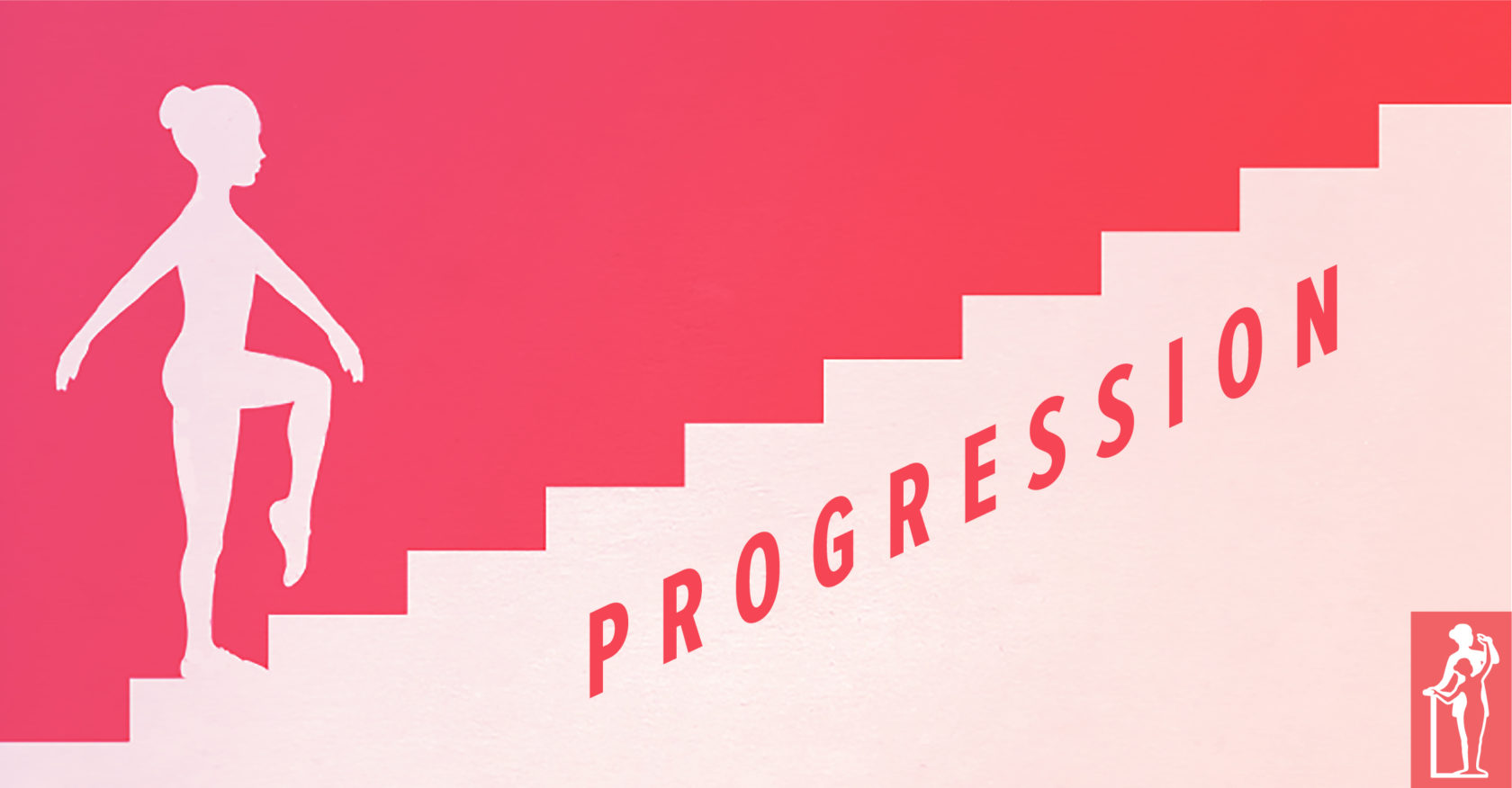From the earliest of classes, the young ballet student is building the skills they will need to learn more advanced steps later. As a young three year-old, the students learn to stand with their feet in parallel, point their toes to the front and then return to the “feet together” position. What may seem simple and mundane to us teachers is vitally important to master in order for them to take on the more difficult steps to come. How can a teacher be sure his or her students are ready to learn more complicated steps?
Teaching Progressions are breakdowns and lead-ups of complex steps and movements. They are ways of leading children into learning a new step or enchainement. Some examples are given below. Each step of the progression should be taught and practiced until it is clean and easy to do before going on to the next step.
Not all of the lead up steps may be necessary with all classes. Depending on the age and ability of your students, you may start on the third step of the progression or you may be working on the last.
Whenever a new movement is introduced, it is done without music until it is understood. Then music is added. If they cannot begin to do a step in 2-3 weeks, they are probably not ready for it. Give them more time.
Note: These steps follow the “Ballet Arts for Young Children” curriculum. There will be steps that have different names, but the logical progression still applies.
Examples of Teaching Progressions
For “Step, Close, Step, Point”:
- Point, Together
- Side, Close
- Step, Point
- Step, Close, Step, Point without a fondu
- Step, Close, Step, Point with fondu
For the “Walking Turn” (3-Step Turn), to be done with hands on waist:
- Step, Close, Step, Point
- 3 walks forward and point
- Look where you are going, to the right, and do the 3 steps while turning around once. Point and look the other way. Now go 3 steps, turning the other way, then point.
- Try 7 steps turning, then point; then go the other way. You will make three turns and a step and point.
For “Spring Points” (hops on one foot with the other leg in a “tendu” position):
- Point, Together
- Three Points and Close
- Hops on one foot
- Point, Hop, Hop, Close
- 3 Spring Points & close
For Adding “Parallel Retirés” to Skips:
- Foot and ankle exercise – flex and extend the ankles while sitting on the floor, in parallel.
- Point, Together
- Retiré exercise, sitting
- Retiré exercise lying on back, to feel the relationship of the two legs as it would be while moving.
- Lift knees waist high while marching
- Retirés while marching
- Knees up high while skipping
- Knees up and feet pointed while skipping
- Retirés while skipping
For “Gallops Forward in Fours”, and for the “Forward Polka”:
- Gallops done freely, either leg.
- Gallops, practicing both legs, repeating the music for the 2nd leg.
- 4 gallops, stop, change feet, 4 gallops, stop, and so on.
- Sit on floor, legs in gallop position, bounce top leg gently on the bottom leg, and count 4 gallops; change and repeat with other leg on top.
- “Lame duck walks” forward (feet are in 3rd, front foot steps a few inches forward then back leg closes to third again) in sets of four closing 3rd back each time, and bringing back leg through on the fourth one.
- Gallops forward in fours (change to other foot in front on every fourth).
- Gallops forward in fours with a partner.
- Forward Polka, or 2 gallops forward with each foot, alone & with partner.
For the “Turning Polka”:
Turning polkas turn a half turn to the right on each hop. They can be done on the diagonal, or counter clockwise around the “dancer’s circle.”*
- Step, Close, Step, Point
- Skipping
- Turning while skipping
- Side, Close, Side, Lift foot to back of calf = “3 Bears Step” without hop.
- Side, Close, Side, Lift foot to back of calf then hop = “3 Bears Step”.
- Should learn the single “Walking Turn” before going on – it helps.
- “3 bears step” with half turn on the hop, turning back and forth, by turning “forward” or en dedans on each of the hops. They should “look where they are going” with each half turn. This creates a “spotting” habit.
- Learn the backward or en dehors half of the turn on the hop, so that both half turns go to the right. This is much harder than turning back and forth!
- Do the step straight across the room, or by turns on the diagonal.
- Try it in a circle, then with a partner.
*Tip: The motion of a turning polka done around the room in a circle can be compared to the earth revolving on its axis as it travels around the sun. Scientifically, the directions are a bit inaccurate, but the imagery sure helps the young dancers to learn this rather difficult movement!
The beautiful progression of ballet and how well it can be adjusted to suit our students’ needs as young children is fascinating! Take the time to break down the new steps your students will learn this year, and be sure to introduce all the components they need to execute those steps with skill and precision.
Related Articles:


Comments
Mary Cowden Snyder,BA,MA says
a universal approach....thank you
Add Comment